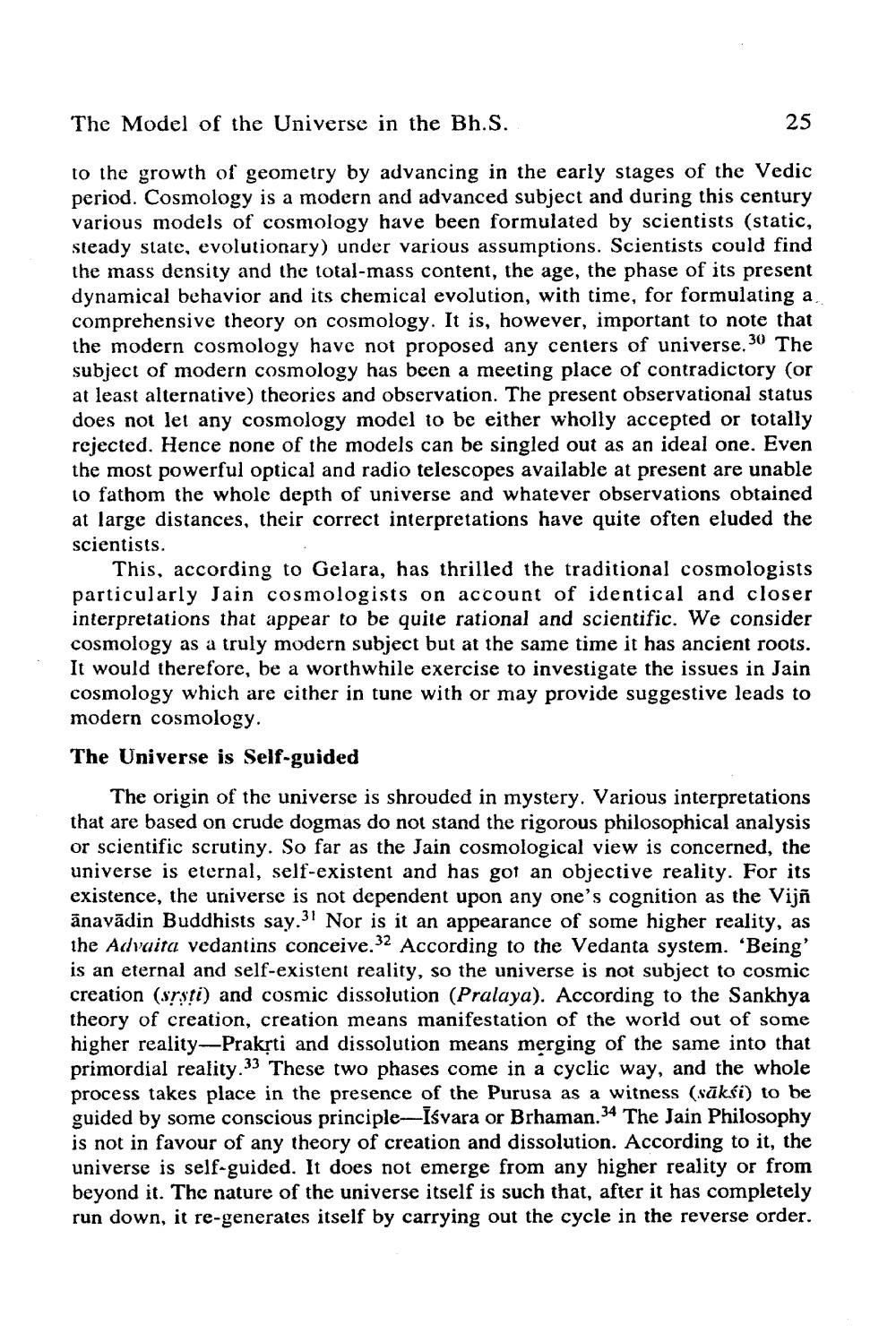________________
The Model of the Universe in the Bh.S.
to the growth of geometry by advancing in the early stages of the Vedic period. Cosmology is a modern and advanced subject and during this century various models of cosmology have been formulated by scientists (static, steady state, evolutionary) under various assumptions. Scientists could find the mass density and the total-mass content, the age, the phase of its present dynamical behavior and its chemical evolution, with time, for formulating a comprehensive theory on cosmology. It is, however, important to note that the modern cosmology have not proposed any centers of universe.30 The subject of modern cosmology has been a meeting place of contradictory (or at least alternative) theories and observation. The present observational status does not let any cosmology model to be either wholly accepted or totally rejected. Hence none of the models can be singled out as an ideal one. Even the most powerful optical and radio telescopes available at present are unable to fathom the whole depth of universe and whatever observations obtained at large distances, their correct interpretations have quite often eluded the scientists.
25
This, according to Gelara, has thrilled the traditional cosmologists particularly Jain cosmologists on account of identical and closer interpretations that appear to be quite rational and scientific. We consider cosmology as a truly modern subject but at the same time it has ancient roots. It would therefore, be a worthwhile exercise to investigate the issues in Jain cosmology which are either in tune with or may provide suggestive leads to modern cosmology.
The Universe is Self-guided
The origin of the universe is shrouded in mystery. Various interpretations that are based on crude dogmas do not stand the rigorous philosophical analysis or scientific scrutiny. So far as the Jain cosmological view is concerned, the universe is eternal, self-existent and has got an objective reality. For its existence, the universe is not dependent upon any one's cognition as the Vijñ änavādin Buddhists say.31 Nor is it an appearance of some higher reality, as the Advaita vedantins conceive.32 According to the Vedanta system. 'Being' is an eternal and self-existent reality, so the universe is not subject to cosmic creation (srsti) and cosmic dissolution (Pralaya). According to the Sankhya theory of creation, creation means manifestation of the world out of some higher reality-Prakṛti and dissolution means merging of the same into that primordial reality.33 These two phases come in a cyclic way, and the whole process takes place in the presence of the Purusa as a witness (sāksi) to be guided by some conscious principle-Isvara or Brhaman. 34 The Jain Philosophy is not in favour of any theory of creation and dissolution. According to it, the universe is self-guided. It does not emerge from any higher reality or from beyond it. The nature of the universe itself is such that, after it has completely run down, it re-generates itself by carrying out the cycle in the reverse order.




